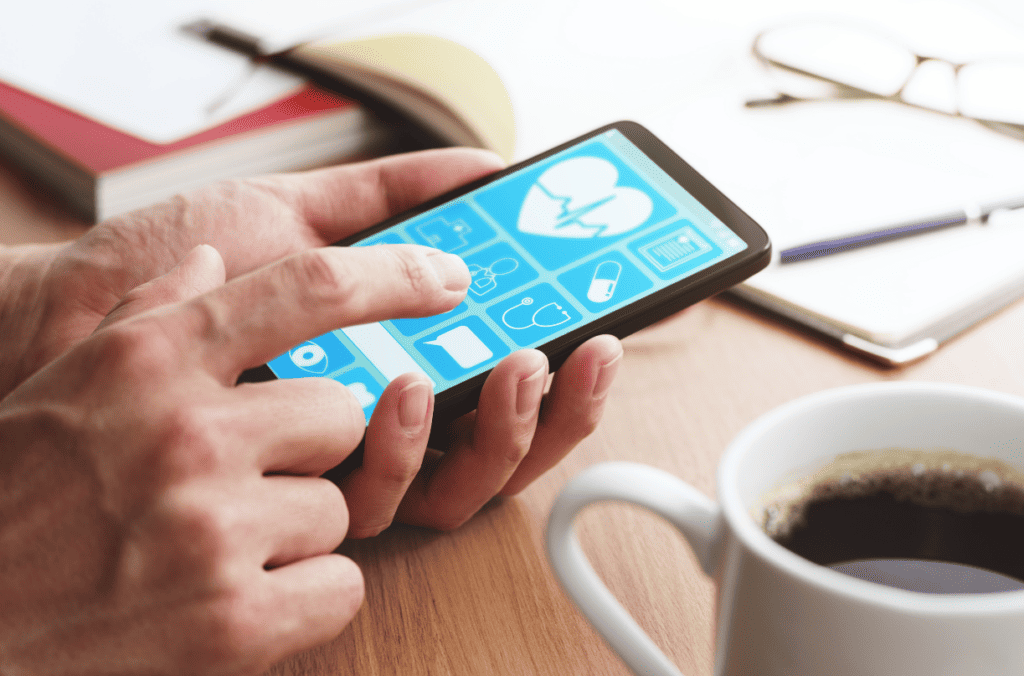The healthcare app market is booming. By 2028, the healthcare industry is expected to reach a $665.37 billion market size worldwide. As healthcare becomes increasingly digitized, patients and providers expect enhanced healthcare app development, elegant apps that deliver care conveniently with visual engagement and usability features.
Table of Contents
Developers face intense pressures to keep up with evolving customer expectations, complex regulations, and a divergent set of app subsectors. This piece will explore top factors and innovations impacting app builders targeting the healthcare space in 2024.

Emphasis on Enriched Design
No matter how sophisticated its back end, an app fails without a positive user experience and clean interfaces supporting tasks intuitively. Healthcare app development now compete on design appeal with consumer apps. Patients accustomed to mobile banking and shopping expect similar usability when managing their care via apps.
Developers from healthcare application development company will invest more time into UX research, mockups, user testing, and creative visual polish for their designs. Expect minimalist layouts, chatbot integrations, and video/voice elements.

Core Focus on Security and Compliance
Healthcare app development data represents some of the most sensitive personal information requiring stringent safeguards and compliance adherence. Data privacy regulations such as HIPAA carry heavy penalties and reputational damage when breached.
Security can no longer be an afterthought. From the planning stages onwards, leading developers actively identify potential vulnerabilities and privacy gaps – integrating controls like encryption, MFA authentication, credential management, and automated policy enforcement checks into app architectures.
Expanding Wearables and IOT Integration
As wearables like the Apple Watch and biosensors from glucose monitors to smart pills gather robust longitudinal health data, apps incorporate readings from these devices to paint holistic pictures supporting personalized care plans. Chronic conditions get monitored through allied custom gear.
Hospitals integrate IOT networks of sensors relaying data to apps creating operational efficiencies – warning staff of equipment issues before they escalate for example. Expect embedded healthcare tech synced to apps booming that companies like Langate can help you with.
Capitalizing on 5G and Edge Computing
With 5G coverage spreading in 2024, developers will tap into its ultra-fast and low-latency wireless connectivity to power more immersive healthcare experiences. Remote patient monitoring, Apple Health/Google Fit data transfers, and system automation use cases will thrive.
Complementing 5G, more processing power gets pushed to network edges and devices rather than centralized cloud servers – a model known as edge computing. Developers distributed critical models enabling real-time clinical insights closer to patients without lags.
Destigmatizing Mental Health Through Apps
The mental health epidemic and its widespread impacts in recent years is mobilizing technology to help address gaps. Developers build supportive communities via apps tackling conditions from depression to PTSD. Chatbots screen users and recommend specialized therapies and counselors.
Augmented and virtual reality immerse patients in treatments digitally that feel less intimidating than in an office setting. With cultural stigmas and healthcare staff shortages hampering access, apps provide private channels easing into care. 2024 should bring a wave of mental wellness innovation.

Boosting Patient Engagement with Apps
Getting patients more involved in managing their health and care plans earns recognition as a vital success metric for value-based care models. Apps enable self-service conveniences for scheduling, prescription refills, bill payment, and medical record access to boost engagement.
Gamification encourages fitness and medication adherence checkpoints. Educational and community app features also actively keep patients informed and motivated around health goals between provider visits.
Mapping Genomics and App Functionality
Genomic medicine gains incredible precision in treating diseases using patients’ DNA profiles. Apps support custom treatments leveraging individuals’ sequenced genomes.
Gene editing techniques gradually become a reality as well. This DNA data integration with apps unlocks profound potential but also faces ethical issues that developers help address through responsible data policies.
Final Words on Healthcare App Development
Though far from exhaustive, these trends showcase some coming innovations set to shape next-generation healthcare apps. Specialized needs across clinical domains still warrant tailored solutions as well.
With sound architecture and design foundations guiding development, healthcare app development in 2024 and beyond will better serve patients, practitioners, and care operations with more seamless, secure, and satisfying user experiences.



